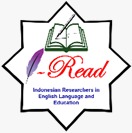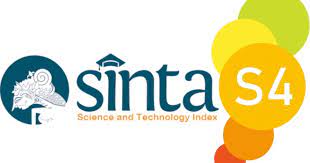The role of the social media platform pinterest as a creative media reference for generation Z students
DOI:
https://doi.org/10.22219/englie.v5i2.35115Keywords:
Generation Z, Media Reference, Pinterest, Student CreativityAbstract
This study was conducted to analyze the role of the social media platform Pinterest as a reference for the creativity of Generation Z students. The research method used was qualitative with a case study approach, allowing for an in-depth exploration of how Pinterest influences student creativity. Data collection techniques were carried out through in-depth interviews, observations, and document studies, ensuring a comprehensive understanding of the subject matter. Informants were determined purposively, consisting of students from the Department of Sociology at Universitas Negeri Padang, specifically from both the Sociology Study Program and the Communication Studies Program. This targeted selection ensured that the informants had relevant experience and insights. Data processing utilized the Miles and Huberman data analysis technique, which involves data reduction, data display, and conclusion drawing/verification. This method ensured that the data was systematically analyzed to identify patterns and draw meaningful conclusions. The results of the study indicate that Pinterest plays a crucial role in facilitating the creative processes of Generation Z students. This platform serves as a rich source of visual inspiration, offering a vast array of images and creative ideas that can stimulate the imagination of Generation Z students. Additionally, the ability to save and share creative content broadens the horizons of Generation Z students, enabling them to continuously develop their creative skills and expertise. Pinterest not only provides inspiration but also serves as a collaborative tool where students can exchange ideas and gain feedback from peers, further enhancing their creative potential
Downloads
References
Abbas, J., Aman, J., Nurunnabi, M., & Bano, S. (2019). The Impact of Social Media on Learning Behavior for Sustainable Education: Evidence of Students from Selected Universities in Pakistan. Sustainability, 11(6), Article 6. https://doi.org/10.3390/su11061683
Acar, O. A., Tuncdogan, A., Van Knippenberg, D., & Lakhani, K. R. (2024). Collective Creativity and Innovation: An Interdisciplinary Review, Integration, and Research Agenda. Journal of Management, 50(6), 2119–2151. https://doi.org/10.1177/01492063231212416
Akdemir, O., & Oguz, A. (2008). Computer-based testing: An alternative for the assessment of Turkish undergraduate students. Computers & Education, 51(3), 1198–1204. https://doi.org/10.1016/j.compedu.2007.11.007
Alismaiel, O. A., Cifuentes-Faura, J., & Al-Rahmi, W. M. (2022). Online Learning, Mobile Learning, and Social Media Technologies: An Empirical Study on Constructivism Theory during the COVID-19 Pandemic. Sustainability, 14(18), Article 18. https://doi.org/10.3390/su141811134
Ansari, J. A. N., & Khan, N. A. (2020). Exploring the role of social media in collaborative learning the new domain of learning. Smart Learning Environments, 7(1), 9. https://doi.org/10.1186/s40561-020-00118-7
Chen, K., Chen, J., & Chung, W. (2023). The effects of two empathy strategies in design thinking on pre-service teachers’ creativity. Knowledge Management & E-Learning: An International Journal, 468–486. https://doi.org/10.34105/j.kmel.2023.15.027
Clarke, E. L. (2019). Team Creativity. In M. A. Peters & R. Heraud (Eds.), Encyclopedia of Educational Innovation (pp. 1–6). Springer Singapore. https://doi.org/10.1007/978-981-13-2262-4_60-1
Claypoole, V. L., & Szalma, J. L. (2019). Electronic Performance Monitoring and sustained attention: Social facilitation for modern applications. Computers in Human Behavior, 94, 25–34. https://doi.org/10.1016/j.chb.2019.01.001
Daft, R. L., & Lengel, R. H. (1986). Organizational Information Requirements, Media Richness and Structural Design. Management Science, 32(5), 554–571. https://doi.org/10.1287/mnsc.32.5.554
Dhir, A., Yossatorn, Y., Kaur, P., & Chen, S. (2018). Online social media fatigue and psychological wellbeing—A study of compulsive use, fear of missing out, fatigue, anxiety and depression. International Journal of Information Management, 40, 141–152. https://doi.org/10.1016/j.ijinfomgt.2018.01.012
Ellison, N. B., Vitak, J., Gray, R., & Lampe, C. (2014). Cultivating Social Resources on Social Network Sites: Facebook Relationship Maintenance Behaviors and Their Role in Social Capital Processes. Journal of Computer-Mediated Communication, 19(4), 855–870. https://doi.org/10.1111/jcc4.12078
Enterprise, J. (2014). Trik Memburu Foto dan Desain Grafis dengan Pinterest. Elex Media Komputindo.
Fahmi, F. Z. (2019). Business networks, social capital and the economic performance of creative and cultural industries: The case of Indonesia. Asia Pacific Viewpoint, 60(3), 370–385. https://doi.org/10.1111/apv.12211
Gonçalves, R. S., Horridge, M., Li, R., Liu, Y., Musen, M. A., Nyulas, C. I., Obamos, E., Shrouty, D., & Temple, D. (2019). Use of OWL and semantic web technologies at Pinterest. In C. Ghidini, O. Hartig, M. Maleshkova, V. Svátek, I. Cruz, A. Hogan, J. Song, M. Lefrançois, & F. Gandon (Eds.), The Semantic Web – ISWC 2019 (pp. 418–435). Springer International Publishing. https://doi.org/10.1007/978-3-030-30796-7_26
Greenhow, C., & Lewin, C. (2016). Social media and education: Reconceptualizing the boundaries of formal and informal learning. Learning, Media and Technology, 41(1), 6–30. https://doi.org/10.1080/17439884.2015.1064954
Hardiman, M., Rinne, L., & Yarmolinskaya, J. (2014). The Effects of Arts Integration on Long‐Term Retention of Academic Content. Mind, Brain, and Education, 8(3), 144–148. https://doi.org/10.1111/mbe.12053
Herrera-Franco, G., Montalván-Burbano, N., Carrión-Mero, P., Apolo-Masache, B., & Jaya-Montalvo, M. (2020). Research Trends in Geotourism: A Bibliometric Analysis Using the Scopus Database. Geosciences, 10(10), 379. https://doi.org/10.3390/geosciences10100379
Huang, Z., Sindakis, S., Aggarwal, S., & Thomas, L. (2022). The role of leadership in collective creativity and innovation: Examining academic research and development environments. Frontiers in Psychology, 13, 1060412. https://doi.org/10.3389/fpsyg.2022.1060412
Huntington, H. E. (2022). Find, Pin, Discuss: Incorporating Pinterest to Foster Community and Collaboration in Online Advertising Classes. Journal of Advertising Education, 26(1), 64–73. https://doi.org/10.1177/10980482221091239
Ismail, T. (2016). Culture control, capability and performance: Evidence from creative industries in Indonesia. Asian Review of Accounting, 24(2). https://doi.org/10.1108/ARA-01-2014-0014
Jing, Y., Liu, D., Kislyuk, D., Zhai, A., Xu, J., Donahue, J., & Tavel, S. (2015). Visual Search at Pinterest. Proceedings of the 21th ACM SIGKDD International Conference on Knowledge Discovery and Data Mining, 1889–1898. https://doi.org/10.1145/2783258.2788621
Kaplan, A. M., & Haenlein, M. (2010). Users of the world, unite! The challenges and opportunities of Social Media. Business Horizons, 53(1), 59–68. https://doi.org/10.1016/j.bushor.2009.09.003
Ghazi, E., & Goede, M. (2019). Creative industries: A case study of Isfahan, Iran. International Journal of Social Economics, 46(2), 271–287. https://doi.org/10.1108/IJSE-09-2017-0409
Lapolla, K. (2014). The Pinterest project: Using social media in an undergraduate second year fashion design course at a United States University. Art, Design & Communication in Higher Education, 13(2), 175–187. https://doi.org/10.1386/adch.13.2.175_1
Lazzez, O., Qahtani, A. M., Alsufyani, A., Almutiry, O., Dhahri, H., Piuri, V., & Alimi, A. M. (2023). DeepVisInterests: Deep data analysis for topics of interest prediction. Multimedia Tools and Applications, 82(26), 40913–40936. https://doi.org/10.1007/s11042-023-14806-2
Li, H., Majumdar, R., Chen, M.-R. A., & Ogata, H. (2021). Goal-oriented active learning (GOAL) system to promote reading engagement, self-directed learning behavior, and motivation in extensive reading. Computers & Education, 171, 104239. https://doi.org/10.1016/j.compedu.2021.104239
Nasrullah, R. (2017). Media sosial. PT Remaja Rosdakarya.
Saputra, R. A. V. W. (2023). Model Komunikasi Bencana Dalam Pemberantasan Penambangan Emas Tanpa Izin (PETI). Al-Ittishol: Jurnal Komunikasi Dan Penyiaran Islam, 4(2), 177–193. https://doi.org/10.51339/ittishol.v4i2.1101
Saputra, R. A.V.W (2023). Maintaining plurality through the preservation of the siulak kerinci tradition. Riwayat: Educational Journal of History and Humanities, 6(2), 283–290. https://doi.org/10.24815/jr.v6i2.31422
Saputra, R. A. V. W. (2024). RETORIKA: Teori dan teknik praktis seni berbicara di era digital. wawasan Ilmu.
Scolere, L., & Humphreys, L. (2016). Pinning Design: The Curatorial Labor of Creative Professionals. Social Media + Society, 2(1), 2056305116633481. https://doi.org/10.1177/2056305116633481
Tapscott, D. (2009). Grown up digital: How the net generation is changing your world. McGraw-Hill.
Wahyuni, F.T. (2018). Berpikir reflektif dalam pemecahan masalah pecahan ditinjau dari kemampuan awal tinggi dan gender. Jurnal Pendidikan Matematika (KUDUS), 1(1). https://doi.org/10.21043/jpm.v1i1.4455
Uram, t. d., & papka, m. e. (2016). Expanding the scope of high-performance computing facilities. computing in science & engineering, 18(3), 84–87. https://doi.org/10.1109/mcse.2016.53
Utz, S., & Breuer, J. (2017). The relationship between use of social network sites, online social support, and well-being: results from a six-wave longitudinal study. Journal of Media Psychology, 29(3), 115–125. https://doi.org/10.1027/1864-1105/a000222
Van Dijck, J. (2013). ‘You have one identity’: Performing the self on Facebook and LinkedIn. Media, Culture & Society, 35(2), 199–215. https://doi.org/10.1177/0163443712468605
Whiting, A., & Williams, D. (2013). Why people use social media: A uses and gratifications approach. Qualitative Market Research: An International Journal, 16(4), 362–369. https://doi.org/10.1108/QMR-06-2013-0041
Yin, R. K. (2009). Case study research: Design and methods (4th ed). Sage Publications.
Zhong, B., Huang, Y., & Liu, Q. (2021). Mental health toll from the coronavirus: Social media usage reveals Wuhan residents’ depression and secondary trauma in the COVID-19 outbreak. Computers in Human Behavior, 114, 106524. https://doi.org/10.1016/j.chb.2020.106524
Downloads
Published
How to Cite
Issue
Section
License
Copyright (c) 2024 Saputra, R.A.V.W

This work is licensed under a Creative Commons Attribution-ShareAlike 4.0 International License.
Authors who publish with English Learning Innovation (englie) agree to the following terms:
- For all articles published in English Learning Innovation (englie), copyright is retained by the authors. Authors give permission to the publisher to announce the work with conditions. When the manuscript is accepted for publication, the authors agree to automatic transfer of the publishing right to the publisher.
- Authors retain copyright and grant the journal right of first publication with the work simultaneously licensed under a Creative Commons Attribution-ShareAlike 4.0 International License that allows others to share the work with an acknowledgement of the work's authorship and initial publication in this journal.
- Authors are able to enter into separate, additional contractual arrangements for the non-exclusive distribution of the journal's published version of the work (e.g., post it to an institutional repository or publish it in a book), with an acknowledgment of its initial publication in this journal.
- Authors are permitted and encouraged to post their work online (e.g., in institutional repositories or on their website) prior to and during the submission process, as it can lead to productive exchanges, as well as earlier and greater citation of published work (See The Effect of Open Access).
This work is licensed under a Creative Commons Attribution-ShareAlike 4.0 International License.
















1.png)












